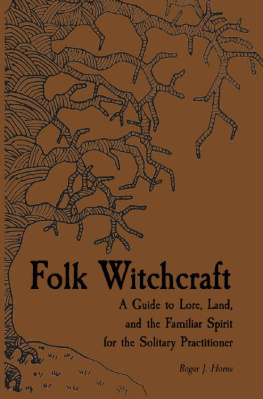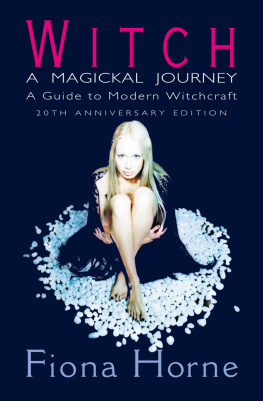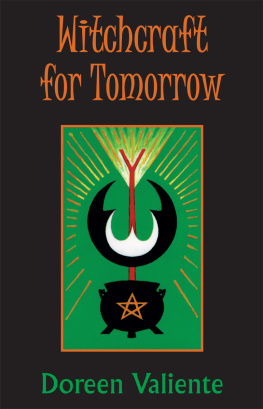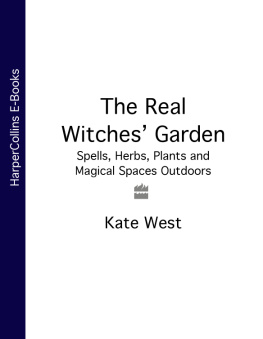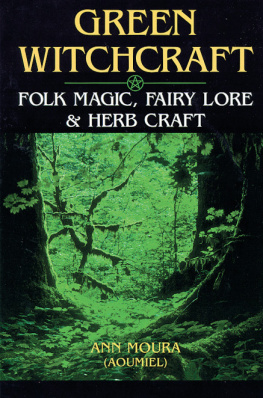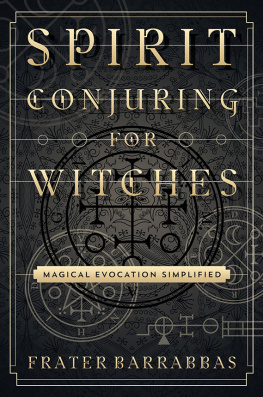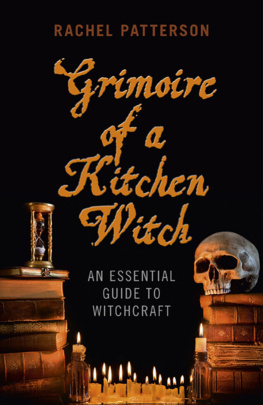All works copyright 2019.
All illustrations by the author.
Moon over the Mountain Press, 2019
Folk Witchcraft :
A Guide to Lore, Land,
& the Familiar Spirit
for the
Solitary Practitioner
Roger J. Horne
Contents
Introduction...............................11
Lore..............................................
Approaching the Lore; Magic in Folk Witchcraft; Spirit Flight in Folk Witchcraft; The Witches' Sabbat; Meetings with Spirits; The Old Ones; Practice: Finding Your Story; Practice: Spirit Flight; Practice: Meeting the Familiar Spirit; Practice: Ritual Construction.
Land.............................................
Rooting into the Land; The Spirits of Ponds, Lakes, Streams, and Waters; Mountain, Rock, and Cave Spirits; Tree Spirits; The Spirits of Herbs and Plants; Animal Spirits; Sabbats, Seasons, and Tides; Practice: Learning the Land; Practice: Plant Spirits; Practice: Shape-shifting; Practice: Laying the Ring or Circle; Practice: The Sabbat.
The Familiar Spirit.....................
Beginning Spirit Work; Dreams, Visions, and the Black Book; Other Varieties of Familiar Spirits; The Language of Spirits; Abjuration and Banishing; Sigils and Incantatory Formulae; Conjuring Spirits; Fetishes and Vessels; Practice: Calling to the Familiar; Practice: The Witch's Altar; Practice: Calling to the Old Ones.
Grammar: Basic Rites..................
Preface to the Grammar; Tools of the Art; To Lay the Ring; To Lay a Simple Ring;
Grammar: Sabbat Rites...............
The Sabbat Rite; The All Hallow's Eve Rite; The Twelfth Night; The Candlemas Rite; The May Eve Rite; The Midsummer Rite; The Lammas Rite; The Esbat Rite; A Rite of Dedication;
Grammar: Conjurations..............
Conjuration of Janicot; Conjuration of Nicneven; Conjuration of the King of Elphame; Conjuration of Aradia; Conjuration of the Folletino Rosso; Conjuration of the Wag at the Wa'; Conjuration of the Hobbitrot; Conjuration of the Black Book of the Art;
Grammar: Various Charms.........
A Song of Flight to the Sabbat; Another Song of Sabbat-flight; Songs for Going forth as Beasts; The White Paternoster; The Black Paternoster; The Green Paternoster; A Charm for Removal; The Poppet; The Nine Herbs Charm; To Bless or Curse by Gesture; The Charmed Sachet; Charm of the Firefly; A Counter-charm; To Drive Malicious Spirits from the Home; The Curse of the Evil Eye; To Speak with the Dead; A Braided Charm; The Witches' Ladder; To Protect against Maleficium and Evil Spirits; Talismans; A Lustration Charm; Rowan and Red Thread; A Charm for Prosperity; An Abjuration of the Spirit; Notes on Herbs; Notes on Colors; Notes on Magical Timing; Notes on Cartomancy; Notes on Alphabets; A Witches' Rann.
Conclusion...................................
Introduction
L ets imagine that we arent miles apart. Were sitting by a fire, looking out into the mysterious night. Its All Hallows Eve, so theres a chill in the wind, and the branches of the trees are bare. The stars are bright. Embers from the fire catch on the wind in bright flurries, drifting up into the yawning dark like fireflies. We are here to talk about witchcraft, about spirits, about the land. We are going to talk about the cycles of nature and what they mean. Well talk about our dreams and visions. Well nourish our spirits with wisdom from the old lore. Beyond the crackling fires glow, the shadows lingering between the trees could almost be our ancestors.
In many ways, we are living in the golden age of witchcraft. New traditions are springing up all around us. Writers, bloggers, and vloggers share their approaches and ideas. Scholars have begun to unpack the old lore through the lens of legitimate spiritual experience. Books on the craft are published every day. These modern grammars usually share the authors rituals, their charms, their holidays, and provide a step-by-step approach to conducting craft workings. They try to explain what witches do, what they believe, how they conduct their rituals, what rules they should follow. Sometimes they offer a spurious account of witch history and lineage that leaves the reader more puzzled than before. These books provide much of the how , but little of the why . Pre-made models and rituals that are practiced without an understanding of their source are like cut flowers: they are beautiful on the kitchen table, but quickly wither away.
This is not that kind of book. Make no mistake; by the end of this book, you will have a treasury of charms, rituals, incantations, and practical methods by which you can conduct your craft. My larger goal, however, is to provide students of the craft with the means by which to connect with the source of witchcraft, those gates of initiation through which any witch worth his salt must pass. Because folk witchcraft is a living tradition, most of us hone and polish our craft over time. We research, experiment, and adapt. We follow the guidance of our familiar spirits. We listen to the land. The ability to access the currents of magical knowledge at work around us, to hear the voice of the wind, as the lore says, is central to witchcraft as a living tradition, and in folk witchcraft as a solitary art, anything less simply will not do. The purpose of this book is not to provide the student with merely one approach, but rather, to connect the student to an endless source of continuous learning through the avenues of lore, land, and spirit, to the living roots of witchcraft-as-folk-tradition.
Lets pause for a moment to unpack the phrase folk witchcraft. I offer this term as a way to distinguish the manner of approach described in this book and as a way to emphasize the role of older lore over witchcraft customs and traditions founded after the popular witchcraft boom of the fifties and sixties. Wicca is the most prominent of these traditions. Folk witchcraft, as I define it here, properly falls within the practices and beliefs popularly referred to as Traditional Craft, but I cannot help but feel that the word traditional implies a cohesive, organized, survived practice, which is inherently misleading since all modern witchcraft entails some degree of reconstruction. Folk witchcraft provides the framework for independent exploration and development in the craft as recorded in our old lore without the shackles of laws and conventions imposed by a modern group's perspective.
Folk witchcraft, then, is both old and new; it is a branch of modern craft firmly rooted in the folklore of witches before the 20 th century. The beliefs, rituals, sacred times, and charms of the folk witch are those preserved in the lore, rooted in the land, and won through personal revelations via the familiar spirit. The witch who feels called to the lore may or may possess a genetic lineage to the ancestors of that current, and belonging to a particular ancestral stream by blood does not guarantee success. It is only through the work of witchcraft that these mysteries are won: observing the sacred times with ritual, practicing the charms, conversing with the spirits, and yes, researching your land and your lore. The use of craft sourced in older texts does, in a way, make folk witchcraft different from many contemporary forms of the craft, but not universally so. I tend to think witches have more commonalities than differences, by and large. Thus, the methods and models discussed in this book are intended to be useful to all witches.
In order to deliver a practical approach to the old craft, this book will use, as its central metaphor, the clew of Nicneven. A clew is an old word for a ball of thread or string, and Nicneven is the name of the Queen and Mother of Witches in Scotland. Casting a clew is a reference to an old rite of witchcraft. (I am particularly drawn to Scottish witch-lore.) For our purposes, the three strands of initiation into folk witchcraft are lore, land, and spirit. By drawing from these strands, we can arrive at innovative rituals, creative charms, and personalized practices that are firmly grounded in tradition. Each strands offerings proceed from the one before it. By learning lore, we identify nature and spirit as consistent sources of power and mystery. By observing the land, we learn the secret to communication and alignment with the familiar spirit, the witchs most perfect guide along the path.
Next page
